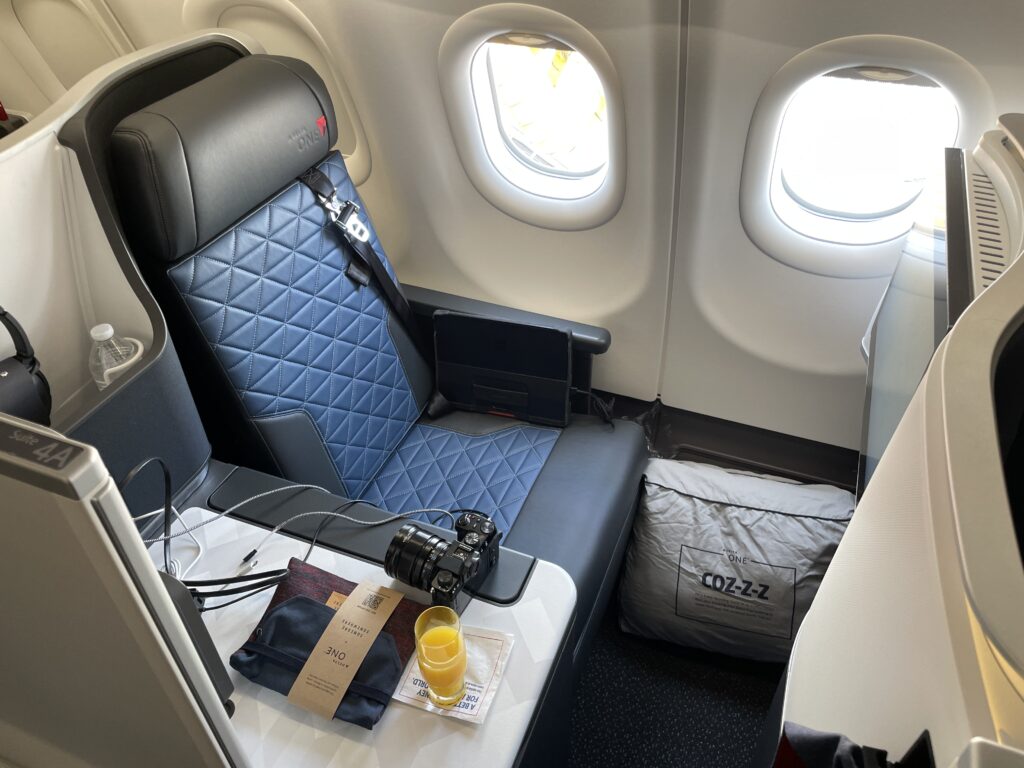Once you have started planning a travel rewards strategy, it will become abundantly clear how vital the intelligent use of co-brand credit cards is. These cards provide a wide range of perks and benefits that can add up to thousands of dollars worth of value every year.

However, like most things travel, you need to plan your travel rewards credit card strategy well; otherwise, it can become a burden instead of a benefit. So, how do you go about choosing the right credit cards for your travel rewards strategy?
How To Evaluate a Credit Card for a Travel Rewards Strategy
When it comes to evaluating a co-brand credit card for a travel rewards strategy, you will need to put in the groundwork and spend the time planning. The first step is, based on your desired travel plans, to make a list of the cards that have the potential to be a right fit for you. Next, you can delve deeper and narrow down your options to truly focus on the cards that maximize your value and your desired travel rewards. There are several considerations to take into account when evaluating cards for a travel rewards strategy.
Don’t Focus On Welcome Bonuses
By far, the biggest mistake you can make with a travel rewards strategy concerning credit cards is to overly focus on the lucrative welcome bonus. We are not saying you should ignore the welcome bonus or not factor it into your calculations. What is being said is that you should probably not be tempted to attach too much weight to the value of the welcome bonus.
Welcome bonuses are nice and can be highly lucrative. Often, they are worth hundreds if not thousands of dollars if used correctly. However, they are a one-shot deal, and once you have used them up, they are gone, and you are now left with the card and its annual fee. Bear in mind that many card issuers now limit the number of times you can receive a welcome bonus in a given period or even a lifetime.

Think of the welcome bonus as a very great deal on a small two-door performance hatchback. After the initial excitement of having such a great deal, you are now stuck with the reality of still needing to fit all your shopping and three large dogs into your excellent deal performance hatchback.
Travel Rewards Strategy: Crunch Some Number
There is no escaping crunching the number when it comes to working out how valuable a credit card is to your travel rewards strategy. Find features and perks of your desired cards to which you can assign a monetary value and work out how many times you will use it per year.
Ex: Airline Co-Brand Credit Card
One of the easiest things to look at when it comes to an airline co-brand credit card is the possibility of free checked baggage. Many cards, even entry-level ones, will give the holder a free checked bag.
No, look at your travel patterns. Do you regularly take a checked bag? If the answer is not that you travel with a carry-on virtually all the time, then this perk is useless to you. However, if you regularly travel with a checked bag, this could be a valuable perk.

From your previous travel rewards planning, you should have a good idea about the number of trips you will take per year. Let us assume that you are taking six trips per year in the US that will require you to take a checked bag.
Now, assume that you travel with Delta and do not have status. You will need to pay $30 for your checked bag each way. Over the course of six round trips, that works out at an impressive $360 per year.
So, you can add $360 to the value column of the card, along with any other quantifiable benefits. These can include a huge array of items, from free Wi-Fi to free drinks or meals, a complimentary upgrade, and more.
Ex: hotel Co-Brand Credit Card
If you are looking for a hotel credit card, you need to repeat the above process. One thing to note is that it can be trickier to do the calculations with hotel co-brand cards since you have to assign a monetary value to many of the items. For instance, what is late checkout worth? If you are leaving to catch a train at 10 am, then absolutely nothing. However, late checkout can be valuable if your flight leaves at 7 pm.
However, with some perseverance and judgment, you can start to add up the value you will derive from a card. For instance, imagine a card comes with a given level of elite status, and amongst the perks of this status is complimentary breakfast.

Now, assume you will be spending 15 nights in this brand of hotels over the course of a year. Each time, there are two of you staying. Consider that a hotel breakfast will typically set you back $15 per person – although this can vary highly by property and location. Fifteen nights for two people is a total of 30 complimentary breakfasts. That is an impressive saving of $450 over the course of the year. So you can add $450 worth of breakfasts to your value column when evaluating this particular hotel co-brand credit card.
Most cards come with other perks to which you must assign a value. For instance, many cards provide a free night annually, upgrades, or a set number of bonus points each account anniversary. You will have to do your research and try to assign value to the perks you will use.
Never Forget the Annual Fee
One of the biggest mistakes you can make when working out a credit card travel rewards strategy is to not factor in the ongoing cost of holding a credit card, and that is its annual fee. While plenty of cards have no annual or even a low fee, some have very hefty annual fees.
Consider the above examples of an airline card that would save you $360 per year or a hotel card that would save you $450 per year. If the card carries a $99 annual fee, it is an excellent deal with your current usage rate. However, if the card carries a $500 annual fee (several cards have an even higher one), then it is not worth your while at that rate.

Bear in mind if you stayed more or took more trips, the balance can shift, and the card could end up being worth your while after all. It is simply a matter of number crunching.
Credit Card Application Rules
Before you click that credit card application button, make sure you are fully familiar with a wide range of application rules. The different financial institutions have a long list of rules outside the simple use of your credit score to determine whether they will approve you or not. Being unfamiliar with the rules means you can get rejected for a simple card, even if you have excellent credit.

The rule not only looks at your credit score but also considers other aspects. These can include how many cards you have opened in the last couple of years. How many welcome bonuses you have received and much more.
Final Thoughts
Undoubtedly, co-brand credit cards should be a key part of your travel rewards strategy. They can make life substantially easier and, aside from earning points, can provide some excellent perks and benefits that will save you a fortune. When it comes to making the most out of your credit cards, it is planning and more planning.






 Table Of Contents
Table Of Contents